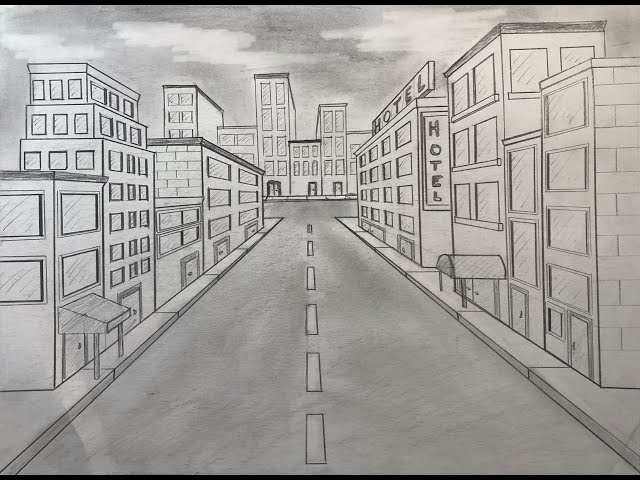
Robert Draws – The concept of line of sight plays a critical role in understanding how we perceive the world around us, especially in drawing and perspective. In art, perspective is a technique used to depict objects, spaces (interiors), and environments (exteriors) that are larger than the human form. According to Cepat Dan Mudah Belajar Menggambar Dengan Pensil (2014) by Veri Apriyanto, perspective is born out of the limitations of our eye’s ability to perceive objects at various distances. As the distance between our eyes and an object increases, the object appears smaller. Eventually disappearing from our view at a certain point. This phenomenon of disappearing objects is closely related to the concept of the vanishing point. Which is determined by the line of sight.
One essential element in perspective drawing is the horizon line. The horizon line represents the level at which the eye observes a scene and is, in essence, a mental line that marks the viewer’s eye level. According to Mastering Pencil (2020) by Tri Edy Marga, the horizon line plays a vital role in framing how objects and spaces are seen. It defines the limits of our visual perception and guides the placement of the vanishing point. Where objects seem to converge or disappear. The vanishing point itself lies on the horizon line and can appear in different positions. Depending on the perspective and viewpoint from which the scene is being viewed.
“Read about: Melestarikan Kain Tradisional Indonesia, Sondang Bangun Mejikuhibiniu Butik”
As the concept of line of sight, The vanishing point is a critical aspect of perspective. It refers to the spot where parallel lines appear to meet or disappear. Often associated with objects receding into the distance. As the distance between the observer and the object increases, the object’s size diminishes and eventually vanishes from view. The vanishing point is always located along the horizon line. There are several types of perspectives that artists use, including one-point, two-point, and three-point perspectives, each incorporating vanishing points in different ways.
In one-point perspective, all the parallel lines of the object seem to converge at a single point on the horizon line. Two-point perspective has two vanishing points, and the lines converge toward both points. In three-point perspective, three vanishing points are used, typically for objects viewed from an extreme angle, such as looking up or down at a structure.
The horizon line does not always stay at the same level. Pengantar Seni Rupa untuk Guru (2023) by Meliantina explores variations in the horizon line, particularly in terms of “high horizon line” and “unclear horizon line.” A high horizon line is used when objects are viewed from a higher perspective, with the horizon line positioned above the normal eye level. This allows for a broader view of the scene, often seen in aerial perspectives or bird’s-eye views. On the other hand, an unclear horizon line is where the horizon line is not clearly defined. Which can occur when objects are observed from an unusual or low perspective, such as looking upward from the ground.
“Read more: Hilirisasi Ekonomi Biru: Solusi Baru untuk Pemberdayaan Masyarakat”
In perspective drawing, the placement of the vanishing point is influenced by the angle or viewpoint of the observer. There are three primary points of view: bird’s-eye view, normal view, and worm’s-eye view.